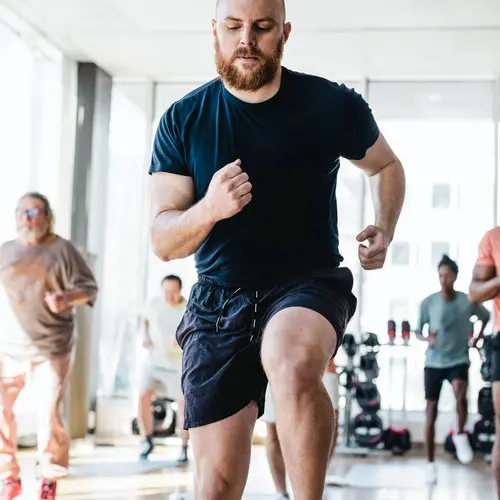Aug. 30, 2024 – Even if you only have time to squeeze in your workouts on the weekend, or during whatever 2-day period you have off work, you’ll still see brain and mental health benefits.
The “weekend warrior” exercise regimen – getting in most of the recommended 150 minutes of moderate-to-vigorous physical activity in a 1- or 2-day period – resulted in a 26% lower chance of developing dementia, a lower risk of stroke by 21%, and a 45% lower risk of Parkinson’s disease, compared to those who remained inactive during the week, according to an intensive study published in Nature Aging. The study, which followed more than 75,000 people for up to 8.4 years, also found that the weekend warriors also had a 40% lesser chance of depression and a 37% lesser incidence of anxiety.
The researchers used data collected from accelerometers, the devices that track your step count on your phone or smartwatch.
“This shows that different physical activity patterns exist, and they tend to provide the same benefits,” said Rohan Khera, MD, an assistant professor of cardiovascular medicine at the Yale School of Medicine. “Head-to-head, there isn’t a big enough health difference between routines to recommend that people switch from one to the other, especially if there’s a convenience factor tied to one activity pattern in particular.”
Although this study didn’t break down the range of activities people were engaging in over the research period, Khera and the breadth of existing literature on the topic suggest that the best course of action is diversifying your workouts. A combination of cardio and strength training is a solid routine that will give you the stamina and muscle to continue a regular workout schedule even as you age.
Indeed, the average age of the people in the study was 62, adding to the weight of the results: Even if you’re approaching your 65th birthday, you can still lower your risk of brain and mental health problems by a significant margin through just 1 to 2 days of exercise.
Khera hopes that, given how many people have access to accelerometers through personal devices, more studies will start to access and leverage the years of data that have already been collected to further understand what activity patterns are working on a population level.
Clearly, exercise is something you can catch up on, unlike sleep, where “once you’ve lost it, you’ve lost it,” explained family medicine doctor Barbara Bawer, MD, who practices at the Ohio State University Wexner Medical Center in Columbus, OH.
Consistency is good for you, not just for brain health, as this study found, but also for heart health, flexibility, and endurance, said Alexis Colvin, MD, an orthopedic surgeon at Mount Sinai Hospital in New York City. One concern she has for weekend warriors, though, is their potential for injuries.
“If you’re doing a higher intensity workout and limiting it to just 2 days a week and you’re not doing anything else the other days, you may have some risk of setting yourself up for injury,” Colvin said. “Because you’re not necessarily doing any cross-training, you’re just doing these short bursts of activity and nothing in between.”
Having a more regular exercise routine – beyond 2 days of consecutive physical activity – gives your body more time to adjust and adapt, rather than inadvertently shocking your body.
On the other hand, as Bawer noted, overdoing it – like pushing yourself 5 or 6 days a week – might be the model of consistency, but depending on who you are and what your routine looks like, it can also be too much for your body to handle. Walking, she said, is a safe bet for anyone looking to up their activity levels in a relatively safe way.
“While this study shows that 1 to 2 days of activity is helpful, you probably won’t meet the [150-minute] recommendation unless you’re doing very long sessions,” Bawer said. “One or two days is better than nothing, but it isn’t adequate enough for overall health.”

